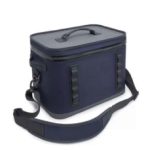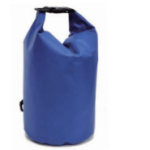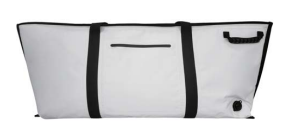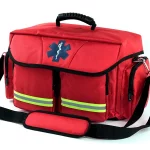Cooler bags might not seem necessary until it becomes apparent they’re needed, but their value quickly becomes evident. From family picnics and work lunches to snack preparation, having a cooler bag makes these tasks much simpler – especially during scorching summer days! Plus it provides the ideal storage solution so you can enjoy delicious treats no matter where life leads you!
Cooler bags come in various sizes and styles to meet individual customer needs. From keeping drinks cold while traveling without access to refrigeration to keeping food cold during a picnic in the park, cooler bags play an invaluable role. It is therefore no surprise that more businesses are including cooler bags into their promotional efforts – seamlessly incorporating them into people’s daily lives.
Here are some methods for keeping food fresh for extended periods in a cooler bag, what items are suitable, and some effective strategies:

1. Exploiting Thermal Bags Effectively
How long will food stay cold and fresh in thermal bags? This is one of the primary questions people ask before purchasing thermal bags, though answers depend on multiple factors, including ambient temperature and insulation of the bag itself. Thermal bags are made of insulating materials designed to keep food cold and fresh when using an ice pack for up to 12 hours of cold storage. Many companies specialize in manufacturing thermal bags to store perishable items like meat or sandwiches. These thermal bags can also be used to store beverages. To maintain the coldness of your thermal bag, pack it with plenty of reusable ice packs – keep in mind that cold air sinks while warm air rises, so place the ice packs directly above food in your thermal bag – frozen water can also work to help maintain its cold temperatures!
2. Leveraging Insulated Lunch Bags Effectively
Insulated lunch bags are typically constructed of soft yet voluminous materials such as polyester fibers. Their interior is lined with heavy-duty foil to maintain freshness of food products inside. A key difference lies in the middle layer’s energy-dissipating properties, which ensure that food remains cold and fresh for shorter. Some bags feature special compartments for placing an ice pack directly atop stored food for even greater cold-chain preservation. Be mindful that insulated lunch bags aren’t designed to store cold items for extended periods. Instead, they work best when used for meats, eggs, raw fruits & veggies and dairy products; keeping your lunch or that of your children fresh until lunch time!
3. The Benefits of Cooler Bags
Cooler bags are essential when it comes to keeping food and beverages cold and refreshing for extended periods. By filling these bags with ice and insulation, they’re an effective way to do just that, particularly useful on field trips or when buying groceries at markets and keeping them chilled in your cooler bag – saving yourself the hassle of purchasing vegetables every day! Furthermore, cooler bags allow for future storage purposes, making life simpler all-round!
To maintain the coldness of items stored in cooler bags, ensure you use plenty of ice packs. Place these on top of food for optimal cooling as cold air descends while warm air rises to maintain a constant cool temperature inside your cooler bag. Proper insulation allows food storage for five or seven days in an icebox.
4. Utilization of Thermal Insulated Thermoses
Pack your cold food securely into a thermos container to keep it cold and fresh until lunchtime. Be sure to follow all instructions regarding storage for cold items like yogurt or milk when packing your thermos container. Refrigerating your thermos beforehand is ideal, allowing it to maintain optimal cold storage temperatures for your lunch bag’s contents. Once packed and sealed in its lunch bag, place the thermos container into the freezer with some ice water in order to further cool it down before placing into your fridge for storage of cold food items. Once chilled, place the food you want to keep fresh and cold into a thermos, pack it into your lunchbox, and add an ice pack so as to ensure its contents remain cold and fresh for as long as desired. Beverages especially will remain cool and refreshing throughout.

With today’s modern tools for maintaining temperature of food and beverages such as thermoses, insulated mugs, lunch bags, and cooler bags it has never been simpler to keep them cold or hot for specific timeframes. For optimal results make sure cooler bags and lunch bags contain sufficient ice; finalize by maintaining these tools to achieve your goal of maintaining your desired food’s desired temperature.





